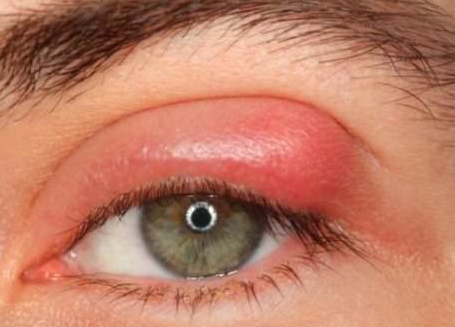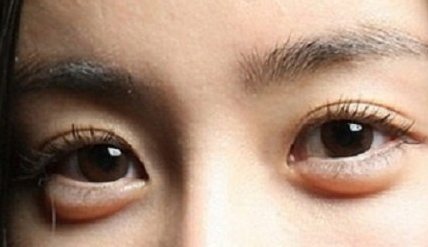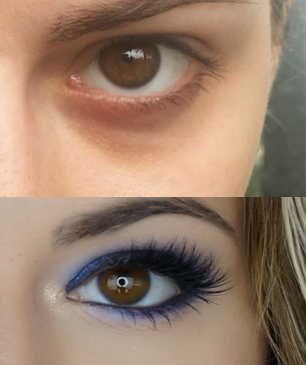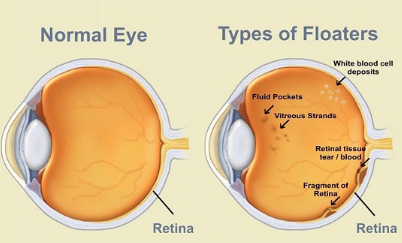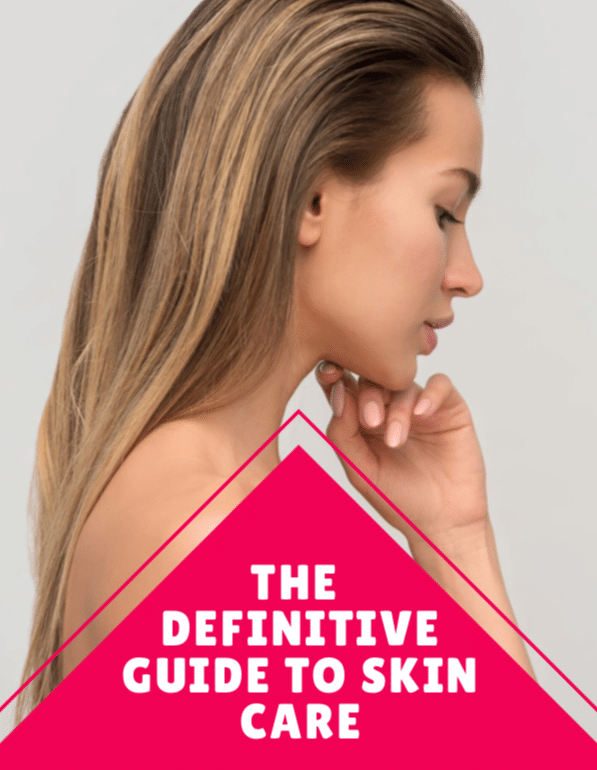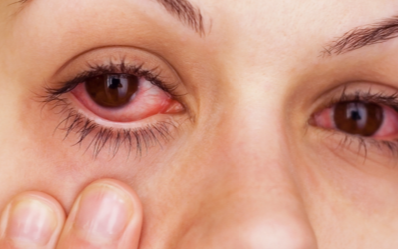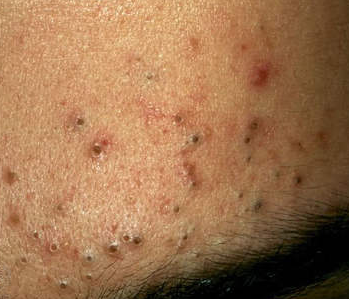What causes lump on eyelid? Is it chalazion, stye or cancer? Explore on white lump on eyelid rim, no pain, among children and adults, how to get rid of it and treatment.
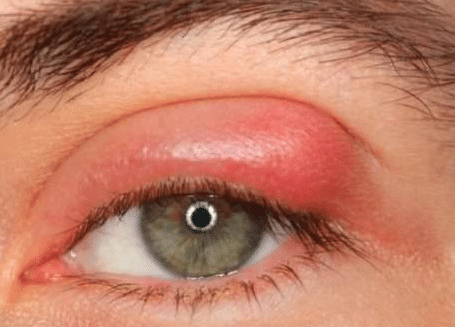
lump on eyelid picture
Lump on Eyelid
Bumps on eyelid develop in a few number of days and sometimes they mostly heal on their own. A lump on eyelid can develop into a chalazion when the oil gland is fully blocked, the chalazion that can cause problems to person’s vision especially if it grows too large.
People with blepharitis are likely to get lumps on eyelid.
Other common eyelid bumps include the below;
- Papilloma- this are usually pink colored, they are also harmless but they grow very slowly affecting the person’s vision or even bother for beauty and cosmetic reasons but they can only be removed using surgical methods.
- Cyst are small fluid sacs which can effect a person’s vision.
White Lump on Eyelid
The following are common causes of bumps on eyelids;
Meibomian Cysts (chalazions)
These are types of lumps caused by lockage of the glands in the eyelid. Frequent chalazons causes drying of the skin and serious blocking of the glands. Meibomian cyst sometimes forms as a result of debris remaining after the gland blocking infection subsides.
The bumps are neither too red nor painful and are likely to disappear naturally within a period of 2 to 3 months. However, for some people the lump may not disappear and will have to be removed by an eye specialist who is likely to conduct surgery.
How to Get Rid of a Chalazion
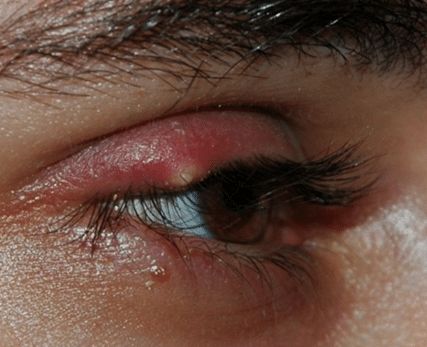
pimples on eyelid chalazion
- Clean the eyelids each day. Soak some cotton wool in warm water. Rub the cotton wool over the closed eyelids for 2-3 minutes, and repeat.
- Then clean the edge of the lower eyelid with a cotton bud to remove scales and debris on the edge of the eyelid. Gently rub the cotton bud along the eyelid, using a mirror, and pulling the lid away from the eyeball with the fingers of the other hand.
- It is safer to boil the water first to sterilise it, and allow it to cool.
- When the lid is clean after a couple of weeks, it is safe to stop cleaning, but you may need to start again if chalazion lump on eyelid start to develop again.
- Adding bicarbonate to the water can help. Use a teaspoon of baking soda (sodium bicarbonate) in a pint of boiled water: this solution can be used over a week if refrigerated.
- If the cleaning is not helpful preventing the chalazions, antibiotic ointment may help. Your GP will need to prescribe it; try it for 3 months (chloromycetin or fucithalmic).
- A healthy diet with omega 3 (or flaxseed oil) and plenty of vegetables and fruit, with little saturated and transfats, is very important.
- Sometimes chalazions return once the ointment is stopped, and you may need a repeat prescription from your GP. Some people benefit using the cream intermittently.
- Finally, if all else fails and you still develop more chalazions, a course of antibiotic tablets may help, such as doxycycline 50-100mg daily for three months (from your GP).
Papillomas
These are usually pink colored, they are also harmless but they grow very slowly affecting the person’s vision or even bother for beauty and cosmetic reasons but they can only be removed using surgical methods.
Papillomas are the most common benign lesion of the eyelid. The exact cause is unclear. These growths represent a benign hyperplasia of the surface epithelium and may be sessile or pedunculated. They occur in middle aged and elderly individuals and may be solitary or multiple, occurring anywhere on the eyelid.
Papillomas differ from the infective warts which consist of inflammatory hypertrophy of surface epithelium with viral inclusions. Treatment is by surgical excision or laser ablation.
Xantheslasma- which is the raised patch on the eyelids that come with age, they are usually harmless although most of the time they are vital signs of high cholesterol in the body.
Stye on Eyelid
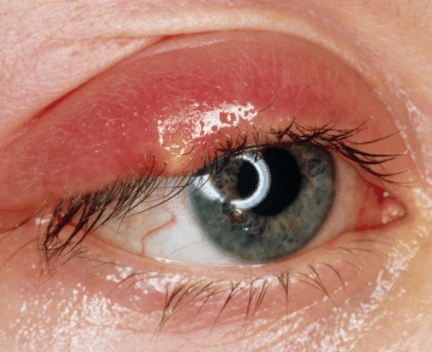
stye on eyelid
What causes stye on eyelid? This is a bacterial infection that affects that gland in the upper and lower eyelid leading to a bump or a swelling on the area that is often tender in touch. They however pose no serious threat to vision of an individual.
Sometimes, that affected area around the eyelid that is swollen vary depending on the location of the infection in the gland. It can sometimes appear as a bump with a head seen on surface of the eyelid. But the bump can also be under the lid leading to the swelling of the eyelid. The glands contribute to the production of tears and the eye may feel scratchy especially when the infection is still active.
A bacteria that gets into the eye from the skin is the main cause of a stye especially where the lubrication of the eyes is done, they are similar to the normal skin pimples that occurs in most parts of the body. A person may have more than one stye on eyelid at a time.
A stye lump on eyelid do not have to have a reason to appear. A germ just gets into the hair follicle at the tip of the eyelash and eventually multiplies to form a pustule.
The germ usually does no harm but sometimes can cause an infection if the skin is broken. Hair follicles are prone to getting infected. A possible way in which the infection occurs is by picking the nose and then rubbing the eye with that hand.
This acute infection of the secretory glands targeting the eyelids. Bacteria enters and infect both the upper and lower eyelids thus causing a lot of inflammation and redness of the eye or the area surrounding the eyelids and the cheek tissue.
The lump can at times point outwards or inwards. It appears with very visible yellowish or even whitish spots that seems larger than a pimple, the apparent stye on eyelid appears on one eyelid but styes can be on many areas on either both eyelids or just one eyelid.
Stye Symptoms
Other than swollen bumps on eyelid that are red, other usual symptoms of styes on eyelid include the following;
- Scratchy sensation around the eye as if the place has something foreign
- A persons becomes sensitive to light
- The eye starts to tear unintentionally
- A person starts to feel the tenderness of the eyelid.
- A small collection of pus usually appears at the affected point of the eyelid which is mostly referred to as pointing the pustule.
A stye is characterized by a small red lump on eyelid or pimple on the edge of the eyelid or on the eyelid. It is caused by a plugged oil gland in the eyelid. The head of the stye on eyelid is usually on the outside of the eyelid, but it may be on the underside of the eyelid. The top or bottom of your eyelid may be warm, red, swollen and painful. You may have a gritty feeling in your eye. A white or yellow head of pus may show up on the eyelid a few days after the stye on eyelid forms. The stye usually opens on its own to let the pus drain out. A stye on eyelid does not affect your vision and is usually gone within a few weeks.
How Long Does a Stye Last?
Over some period usually about 3 weeks, the skin over the stye give way for the pus to be released so that the swelling disappears very quickly and the eye starts to feel abit more comfortable. The infection can at times spread to cause more styes on eyelid to other eye but usually it spreads along the eyelid making it to look as if it is swollen and inflamed.
Are Styes Contagious?
Styes are very contagious.
To avoid stye on eyelid infection, ensure;
- Not to share face towels with any other person
- Do not squeeze pick or rub the stye in your eye and touch your friend or child
- That you wash your hands thoroughly after touching the affected part of the eyelid
Internal Stye
An internal stye on eyelid that occurs on the underside of the eyelid also causes a red painful bump although its location prevents the whitehead form appearing on the eyelid. The internal stye on eyelid can disappear completely once the infection ceases or it may at times leave a small fluid filled cyst that can at times require to be manually opened and drained.
If the clogged gland that forms a stye does not get better with time, a scar tissue usually develops around that particular tissue and the pain goes down and the bump, now referred to as chronic chalazion results.
It should be clearly noted that, styes on eyelid and chalazia are harmless to your vision and can rarely affect your eyesight although they can rarely result to a severe face infection referred to as cellulitis that can be very serious. This occurs at any age and may recur form one period to another.
Stye in Eye
Styes are a rare medical condition but also they can be very irritating. It is usually a red lump that looks like a pimple that usually forms at the outer edge of the eyelid, although at times it can form inside the eyelid interior part of the eye.
Eyelids have numerous glands that at times become clogged by the dead skin or oil build up. When that gland is completely blocked, the bacteria tends to grow from inside into what causes the stye on eyelid to develop.
Lump on Eyelid Treatment
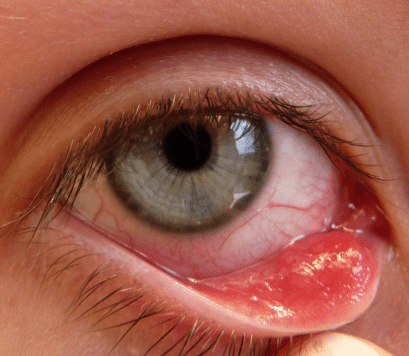
how to treat lump on eyelid
The type of treatment can vary depending specifically on the amount of the affected lid tissue and the rate of spread of the infection.
The risk also increases when an individual has diabetes, chronic skin conditions such as acne, and the history of the lump on eyelid.
Very mild infections can easily be treated by use of a hot bath and thorough of the eyelid. To do hot bathing, bath the bump on eyelid with a compress using a clean piece of cloth soaked in warm water. Ensure that the water is not too hot to burn the skin. The process should be repeated to about four times in a day.
For average infections on eyelid, they are more painful and have more pains that require antibiotics to treat from the general doctor. Always ensure to take care not to spread other eye that is not infected.
For severe lumps on eyelid, they cause a more serious swelling to the entire eyelid and may also need antibiotics to cure. Seek advice from your doctor.
To ensure that treatment is effective and that the unblocking of the glands is done and help stop more development of the bumps on eyelid, ensure that you do the below;
- Always make sure to clean the eyelids everyday by soaking a clean cotton wool in warm water and rub it over the eyelids for about 4 minutes repeatedly.
- Also clean the edge of the other eyelid with a cotton wool to ensure that the scales are removed as well as the debris that usually form around the eyelid. Gently rub the cotton around the eyelid by observing it through the mirror and pull it away from eyeball using the fingers.
- Ensure to sterilize the water first by boiling it.
- When the eyelid cleans up after a couple of weeks, then you can stop the cleaning, but ensure to start cleaning it once more if the lump on eyelid starts to develop again.
- It is helpful to add sodium bicarbonate in the warm water that you have sterilized as the solution can be used for a longer time if refrigerated.
- If you find out that cleaning process is not very helpful, use of antibiotic ointment may be very helpful. Your general doctor will prescribed to you, some people are helped when they use the cream in a shorter period than others, follow instructions that you may have been given by the doctor.
- Finally, if all the mentioned processes fails and you see the effects has increased, then taking antibiotic tablets may help. This is the last if all other methods of treatment has failed and do not work. It is very effective especially if you have a person has a skin condition such as acne or extremely dry skin or if the edge of the eyelid has been and continues to be red for a long period of time.
The benefits that comes along with antibiotic tablets lasts for a longer period of time even after treatment but if the bumps recurs then you should to alternative further courses.
- Do not try to squeeze it or even any other lump that you come across on your face but let it drain by itself.
- The above methods of treatment notwithstanding, most lumps on eyelid such as stye do not have a perfect treatment method but can be left alone as they always burst on their own leaving the eyelid normal.
Home Remedies for Lump on Eyelid
Although most lumps drain away with influence of any ointment or antibiotic, the application of a hot or warm compress are the most effective to use and a better method to drain the pus. The dampness as well as warmth helps the bump on eyelid to drain very fast. Treat it just like all other infections, you are not supposed to touch it with your fingers
Lumps are known to go away after a few days using the simple home treatment that can treat and even prevent further occurrence.
For example styes can sometimes cause a bruised kind of feeling around the eye. With typical treatment, the stye on eyelid can resolve within a week, do not lance the stye as it is not recommended
You are also advised not to wear any kind of make up or contact lenses during the period of infection until the lump on eyelid is completely healed.
But, if you experience recurrent bumps you should have an eye care professional look at it. For the majority of home treatment helps. Here are a few suggestions for home treatment:
- Make a compress, by soaking a clean wash cloth in warm water.
- Wring out the wash cloth and place it gently over the eyelid.
- Put the warm compress on your eyelid for ten minutes, four times a day.
- The warm compress will help the lump on eyelid to drain.
- Your healthcare provider may give you antibiotic drops or ointment to treat the lump
- If it does not drain on its own your healthcare provider might need to drain it.
- Do not squeeze the bump on eyelid.
- Wash your hands often with soap and dry with a clean towel.
- Keep your eyelashes clean. You could gently wash your eyelids with baby shampoo and warm water twice a week.
- Don’t share eye makeup with anyone.
How to Get Rid of Lump on Eyelid Fast
- Washing of hands- avoid rubbing of dirty hands on the eye as it can introduce other particles that clog the said oil glands or even irritate the bump that is already on the eye. Wash the hands with soap and water daily and at all times
- Do not try to squeeze the lump, this can even cause more problems than you thought as releasing the pus will most likely cause the spread the infection, let it just drain without interference or maybe consult a medical doctor to professionally drain it from you.
- Using of a warm washcloth- when a cloth is wringed when dump, placed on the eye for over 5 minutes, done about three to four times in a day, will help dissolving the pus allowing the natural draining.
- Go natural- a make-up should not be put over a lump on eyelid as it delays the normal healing process and irritates the eye even more, you could also get bacteria from the makeup from that could spread to the other eye.
- Baby shampoo- clean your eyelids most often to prevent any other eyelid lump that may affect you, choose tear free shampoo that should be mixed with warm water, the eyelids should be gently wiped using a very clean cotton swab or a clean wash cloth. Repeat the process in two or three days in a week.
- Discard old makeup – sometimes , old makeup can be a source of the bacteria that is causing styes especially the ones that are more than three months old
- Use of teabag compress- this is an alternative to warm cloth compress, green tea is mostly recommended as it helps to reduce the swelling as it has also some antibacterial properties
- Sometimes lumps tend to recur, thus calling for a better eyelid hygiene. This implies regular lid scrubbing that will ensure removal of excess germs and even cellular debris that accumulates.
- Put a few drops of the mention shampoo in a cup that contains warm water and stir.
- By using a cotton wool ball, ensure to gently brush with a lot of care the soapy solution on the base of the eyelids while the lid are very closed, or if you have less time to mix the shampoo, then you can scrub using a soapy flannel when you are in the shower.
When to seek medical care about lump on eyelid
You should seek medical advice if eyelid redness or swelling does not improve with warm towel compresses in 3-4 days.
You should seek medical advice immediately if you have frequent bouts of eyelid swelling or if you experience any of the following:
- Fever
- Headache
- Any visual changes, such as blurred vision or a decreased ability to see
- Eye pain or drainage
- Extensive swelling or redness
- If both the upper eyelid and the lower eyelid of one eye are swollen
- If both eyes are swollen
However, regardless of which technique that you have chosen, it is the mechanical rubbing which usually keeps the lids clean and clear off debris. It is very crucial to note that you should avoid as much as possible any contacts of the eyelids with all other cosmetics, dirty towels or even the contaminated hands.
Many people will experience lump on eyelid that starts with pinpoint tenderness of the lashes that indicates an early signs of stye on eyelid.
Further references;
- Eyelid Bump: http://www.healthline.com/health/eyelid-bump#Overview1
- Chalazion or meibomian cyst (lump in eyelid) https://www.webmd.com/eye-health/chalazion-what-is#1
- Chalazion http://patient.info/health/chalazion-leaflet

